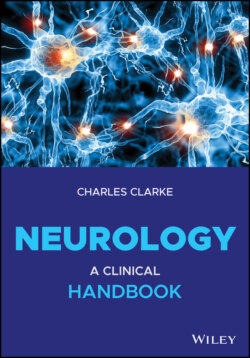Читать книгу Neurology - Charles H. Clarke - Страница 61
Essential Embryology of the Spine
ОглавлениеThe adult spine is divided into the cranio‐cervical junction, cervical, thoracic, lumbar and sacro‐coccygeal spine. In early foetal life the ectodermal germ layer forms the primitive neural tube that gives rise to the entire nervous system. This tube closes by the end of the fourth intrauterine week; failure of this primary neurulation results in fusion defects such as anencephaly or spina bifida. By this time the brain vesicles are present – the forebrain, midbrain and hindbrain. By the end of the fifth intrauterine week mesoderm that lies around the neural tube completes segmentation into somite pairs, from the occiput to the coccyx. Epithelioid cells of these somite pairs transform rapidly and migrate towards the notochord where they differentiate into three cell lines: sclerotomes – connective tissue, cartilage and bone, myotomes – segmental muscle and dermatomes. In the sclerotomes, chondrification leads on to ossification – anterior and posterior centres for each vertebral body and two for each arch. This is largely complete by the 12th week of foetal life.
Disruption during these stages accounts for many anomalies. After the third month the vertebral column and dura lengthen more rapidly than the cord. By term, the cord tip typically lies at the L2–3 interspace. The spine can be identified on ultrasound at 12 weeks and its integrity determined by 20 weeks.
Figure 3.1 Genetic control of spinal development – putative mechanisms.
Source: Courtesy of Dr Simon Farmer.
